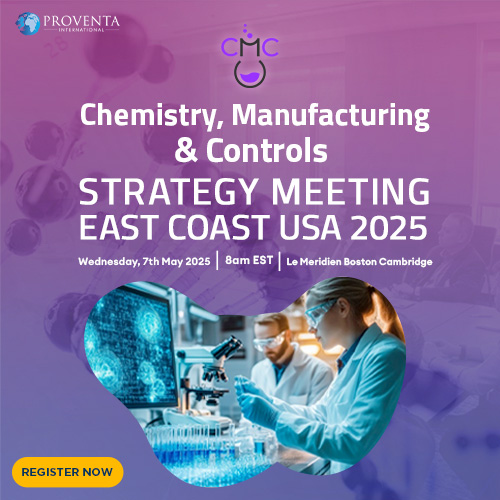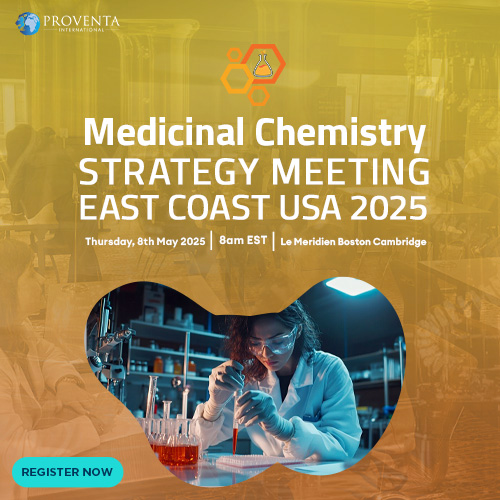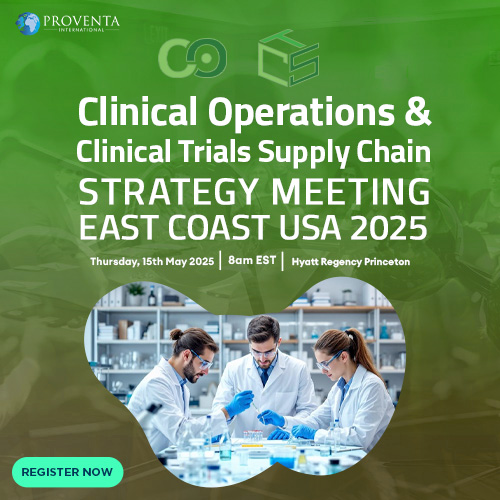About the Interviewee
Stephan O. Krause is the Executive Director of Cell Therapy Global Quality of Bristol Myers Squibb.
Stephan O. Krause, Ph.D., serves as Executive Director for Analytical Science and Technology in Cell Therapy Quality at Bristol Myers Squibb, where he leads global analytical and quality functions supporting the development, manufacture, and regulatory advancement of advanced therapy medicinal products (ATMPs). Dr. Krause holds a Ph.D. in Analytical Chemistry and Biochemistry from the University of Southern California, where his doctoral work focused on mechanistic enzymology using isotopically labeled phosphate compounds to probe ATP hydrolysis in nitrogenase.
With over two decades of technical and executive experience across biopharmaceutical organizations, Dr. Krause has led analytical method development, validation, transfer, and lifecycle management efforts for a wide spectrum of modalities—including monoclonal antibodies, antibody-drug conjugates (ADCs), ATMPs, vaccines, biosimilars, and small molecules. Prior to his current role at BMS, he held senior leadership positions at AstraZeneca, MedImmune, Bayer, and Favrille, where he directed quality systems, analytical strategy, product specifications, technology transfer, and global comparability protocols.
Dr. Krause is internationally recognized for his contributions to harmonizing analytical and quality practices in the biopharma industry. He is a distinguished leader within the Parenteral Drug Association (PDA), where he currently serves on the Board of Directors and chairs multiple high-impact initiatives including the ATMP Advisory Board, Technical Report 56 Annex on ATMPs, and ANS-007 on Analytical Standard Development. His leadership across PDA Task Forces has earned him numerous industry accolades, including the PDA Distinguished Book Author Award, Technical Report Awards, and the Fred Simon and Distinguished Service Awards.
A sought-after speaker and regulatory advisor, Dr. Krause has been invited by the FDA and Health Canada to present industry perspectives on platform analytical processes, accelerated product development, and implementation of ICH Q2(R2), Q12, and Q14 guidelines. At Bristol Myers Squibb, he continues to drive innovation in analytical standardization, real-time quality monitoring, and regulatory excellence—ensuring the advancement of cell therapy products to address critical unmet medical needs through rigorous, scalable, and science-driven quality frameworks.
The Discussion
Journey to Leadership in Analytical Strategy and Cell Therapy Quality
[Dex Marco]: It’s such a pleasure to have you here with us today, Dr. Krause. So Stephan, your leadership spans analytical transfer, lifecycle management, and regulatory harmonization for biologics and advanced therapy medicinal products (ATMPs). Could you share how your technical and regulatory experiences shaped your role in driving the Biopharmaceutical Standardization and Regulatory/Pharmaceutical Development Association (for example, ANSI/PDA-007 Standard, Analytical Procedure Replacement, Transfer, and the Use of Platform Analytical Procedures for Biologics)? How has collaborating with global agency and industry subject matter experts (SMEs) influenced your vision for advancing analytical standards and control strategies?
[Stephan]: Responses are my own and views expressed do not reflect those of my employer or any other organization.
I actually need to go back to the late 1990s here. My first post-doctoral degree job in industry was to (re-)validate analytical methods for several commercial products for a leading blood plasma manufacturer. I learned very much the hard way what it can lead to when validation studies had not been executed to current expectations. A few years later, in a very similar role as leader of a growing team for a large commercial biologics manufacturer, my responsibilities and tasks were essentially the same. Also here, our deficiencies also included (similarly) analytical method validation and QC data integrity. It was then when I decided to publish best industry practices for analytical method lifecycle steps. After receiving a lot of positive feedback from my initial publications, filling the existing best practice gaps, I continued to simply look for more opportunities to cover more gaps by engaging more with agencies and industry associations. As I then went through job changes and growth cycles, I continued to gain more trust and recognition by industry, agencies, and my colleagues. As my experience and reputation grew, I was then leading global experts working groups and workshops with leading agencies. I was able to publish many best-practice whitepapers. In summary, by recognizing and successfully closing existing (practical) guidance gaps, I have built my reputation and recognition as an expert and successful leader. This has also helped me tremendously in leading critical operational and/or supporting functions in my recent/current role(s).
Risk-Based Analytical Method Transfers: Redefining Acceptance Criteria
[Dex]: Among many other best-practices, the new standard emphasizes scientifically rigorous, risk-based Analytical Method Transfer (AMT) modeling for biologics and ATMPs. How do you recommend balancing statistical stringency and practical feasibility when setting multivariate equivalence thresholds? Specifically, how should method drift, manufacturing variation, and intrinsic measurement variability be factored into transfer acceptance criteria?
[Stephan]: AMTs “success” is often determined for quantitative test methods by direct lab-to-lab comparison testing, using equivalence model testing and acceptance criteria. The total analytical error (TAE) concept option described in ICH Q2R2 can also be applied to late-stage/commercial AMT, which can be considered a validation extension onto another QC laboratory. When setting acceptance criteria for equivalence testing, as laid out in detail conceptually and with case studies in the new ANSI/PDA-007 Standard, this can be set “inside-out” and performance-based (sending QC lab performance). Alternatively, a more risk-based approach to limit the potential impact to patients and future manufacturing success is to set acceptance criteria “outside-in”, as an impact-based proportion of the relevant product release specification(s). This would then limit the maximum allowed variation and/or drift for future manufacturing.
Analytical Method Comparison: Navigating Equivalence, Superiority, Non-Inferiority and Lifecycle Bridges
[Dex]: Analytical Method Comparison (AMC) in your framework extends to equivalence, non-inferiority, and superiority models, how should sponsors prioritize acceptance model selection Additionally, how should specifications be adapted when method replacement introduces changes in analytical bias or sensitivity?
[Stephan]: We need to first distinguish between qualitative and quantitative methods. Qualitative methods produce results such as pass/fail, yes/no, or results reported simply as “less than” an action or specification level. For qualitative methods, non-inferiority and/or superiority comparison models should be selected. For more detail, refer to the ANSI/PDA-007 Standard. Quantitative methods are generating numerical results with accuracy and reliably reported in the same units as the specifications. Similar to AMT study acceptance criteria for equivalence testing, an inside-out approach may be most practical for early-stage development as the existing historical manufacturing capability data may be very limited. Acceptance criteria are then established based on the current method performance, ensuring continuous performance-control following the method change. For late-stage development/commercial, an outside-in approach is usually preferred. Here, acceptance criteria are established from the product specification(s) and the current manufacturing process capability, ensuring that test results from the new method are not significantly different from the current method.
Typically, a new specification is needed when an analytical method is replaced by a different test method. A “bridged” specification revision is usually applied when the test procedure remains unchanged, and only critical test method component(s) are modified that significantly change the test results (drift and/or variation). For example, when replacing a HCP antibody test kit in an ELISA-based test method. Proportional “bridging” is then required to ensure that the current manufacturing capability and impact to patients remain essentially unchanged.
Platform Analytical Procedures: Standardizing Risk Across Diverse Product Portfolios
[Dex]: The Platform Analytical Procedure (PAP) framework introduces risk-based platform confirmation for biologics and advanced therapies. How do you propose ensuring platform analytical consistency when Critical Quality Attributes (CQAs) exhibit distinct variability mechanisms across modalities? At what point should platform deviations trigger revalidation versus bridging under the Analytical Target Profile (ATP) framework for regulatory robustness?
[Stephan]: A PAP is defined as a multi-product method suitable to test quality attributes of different products without significant change to its operational conditions, system suitability and reporting structure. This type of method would apply to molecules that are sufficiently alike with respect to the attributes that the platform method is intended to measure. Platform technology has been recognized by FDA since February 2023 when FDA announced acceptance of platform technologies in future submissions. Similar to using compendial test methods, PAPs may only require (significantly reduced) risk-based verification/confirmation study data for the actual product to be routinely tested. However, significant procedural and/or system suitability testing (SST) changes required to accommodate a new product to be tested, may lead to an unsuitable PAP for any new products that cannot fit without these procedural modifications. In those cases when a PAP cannot be applied “as is”, any significant method modification may require a complete AMV study.
Aligning Analytical Target Profiles (ATP) to Manufacturing Control: A Risk Quantification Challenge
[Dex]: You emphasize ATP design aligned to manufacturing Critical Process Parameters (CPPs) and CQA variability control strategies. How can analytical bias and variation targets be dynamically staged alongside evolving process capability indices (Cp, Cpk)? What approaches ensure the control system remains resilient yet sufficiently flexible to absorb lifecycle manufacturing improvements?
[Stephan]: Ideally, the ATP is established early in development with the intent to capture initial, relevant method performance characteristics and relate those proportionally to manufacturing performance and controls. This can then facilitate enhanced method development in parallel to (enhanced) product development. Through an iterative review, updating, and necessary optimization staging gate process during product development and commercialization, any need of a focused, timely improvement will then become transparent. The analytical performance expectations (updated ATP) and actual analytical performance controls for all major variation/bias sources such as critical reagents, instruments, analyst proficiency, etc., and controlled with staged SST conditions, should be continuously aligned proportionally with the control conditions for manufacturing (ex., CPPs) during product development. All analytical and manufacturing performance bias/variation contributions to the total observed manufacturing variation are established and controlled by proportioning specification-based budget allocations. All proportions are adjusted based on given manufacturing capabilities (CpKs) within the relevant product specification(s). This will the become the foundation of an enhanced method development program that fully supports predictable and controlled QbD-type manufacturing.
Proportioning Control Strategy Components Across Raw Materials, Starting Materials, and Critical Reagents Variability
[Dex]: Your strategy highlights proportional acceptance testing across all critical manufacturing inputs: Raw Materials (RMs), Starting Materials (SMs), and Critical Reagents (CRs). How do you recommend harmonizing control strategy components when analytical variability is driven by diverse raw material sources?
[Stephan]: Similar here again, we should establish proportional acceptance testing and conditions for all relevant critical analytical control strategy components such as RMs, SMs, CRs. As mentioned in the previous answer above, with increasing data and knowledge of variation/bias sources, we should ideally establish common change impact criteria and thresholds for all future manufacturing and/or testing changes that include potentially highly variable RMs, SMs, and CRs.
Change Impact Modeling: Building Resilient Analytical Lifecycle Frameworks
[Dex]: You advocate standardized change impact criteria to future-proof analytical control strategies. How can probabilistic modeling techniques, such as Monte Carlo simulations or Bayesian impact trees, enhance analytical change assessments? When concurrent manufacturing and testing optimizations are made, how should compounded variance be risk-assessed without over-triggering specification tightening?
[Stephan]: Our biologics industry has been using modeling techniques, such as Monte Carlo simulations, to predict future manufacturing variation and overall capabilities. Often, these simulations are used to support product specification limit justifications in marketing authorization applications. Historically, they have not nearly as much been used for QC testing performance predictions. In my experience, the main reason why the modeling of analytical performance has not been used more is that the product specifications are typically based on historical, representative, and product-specific lot release and stability data. And, future manufacturing performance modeling data is typically only used to justify the setting of somewhat wider specifications, and thus, proportional higher CpKs. The historical and future anticipated analytical variation is already integrated into the observed manufacturing variation (and typically the resulting product specifications) and the additional analytical simulations used by the sponsor would likely be considered by the agencies to be “double-dipping”, leading to difficult-to-justify wider specifications which may not be acceptable to the agencies. As mentioned above, a more practical and agency-acceptable process/condition for predicting future analytical performance would be to use the recommended enhanced development and staging process.
Analytical and Manufacturing Robustness Co-Staging: Achieving True End-to-End Control
[Dex Marco]: You envision analytical and manufacturing robustness criteria evolving together across the lifecycle. Could you elaborate on how real-time control modeling and digital twins can optimize co-staging of aligned control elements? How might staging proportional robustness components preemptively strengthen commercial readiness and regulatory alignment at licensure?
[Stephan]: Assuming that we are using an enhanced analytical and manufacturing development process with QTPP and ATP aligned early in development. All analytical and manufacturing process variation components are then proportionally budgeted and allocated, and, this budgeting relationship is then maintained throughout all staging and revision opportunities given during product development, commercialization, and post-licensing stage(s). Common staging opportunities are, for example, clinical phase 1 manufacturing, pivotal clinical phase manufacturing, PPQ campaign manufacturing, and technology transfer(s). Typically, some of the manufacturing “process-equivalent” analytical method lifecycle steps are completed before the equivalent manufacturing ones. For example, analytical method robustness studies, transfer, and validation studies are often completed prior to their equivalent manufacturing process studies. Executing the relevant analytical studies before the manufacturing process studies is often a preferred business practice by sponsors to reduce risking any potential credibility/confidence loss in the manufacturing study testing data. Front-loading process and analytical characterization, development and robustness studies can further reduce the unexpected occurrence of high variation/bias in late-stage development. Ideally, process and analytical optimization is completed before their robustness study executions and operational ranges/conditions finalized prior to initiating any required technology transfer, AMV and PPQ studies. Using all staging opportunities before, during, and after robustness, tech transfer, and validation studies to review and revise procedural ranges and SST acceptance conditions, the resulting enhanced analytical development program and impact-based controls will then ultimately greatly support OOS investigations, deviation management, and rapid product release.
Future of Analytical Science: Global Standardization and the Rise of Platform Quality Systems
[Dex Marco]: As analytical science adapts to decentralized Quality Control (QC) models and continuous manufacturing, harmonization becomes critical. Given your role as Executive Director of Analytical Strategy and Cell Therapy Quality, how do you foresee standards like ANSI/PDA-007enabling global regulatory convergence while maintaining technical flexibility? What innovations will be most transformative in redefining analytical procedure lifecycle management for biologics and personalized medicines?
[Stephan]: The new analytical standard ANSI/PDA-007 provides the implementation process and conditions, as well as the regulatory submission process, for analytical testing standardization, as well as using platform technologies and platform analytical procedures (PAPs). The change-over process for a new analytical technology is detailed conceptually and practically with many case studies, including current multi-attribute methods and rapid sterility testing. Supporting decentralized QC models, the analytical method transfer (AMT) study scenarios are laid out with pros/cons discussed, and, practical guidance for how to prevent significant divergence of test results, using suitable models and risk-based, patient-impacting thresholds. In my opinion, next-generation biologics should be manufactured and tested using fully automated platform technologies. The next big step for our industry will be to utilize AI for predictive data management, enhanced and adapted manufacturing processes and controls, etc.
Engr. Dex Marco Tiu Guibelondo, B.Sc. Pharm, R.Ph., B.Sc. CpE
Editor-in-Chief, PharmaFEATURES
Join Proventa International’s Chemistry, Manufacturing, and Controls Strategy Meeting at Le Meridien Boston, Cambridge, Massachusetts on the 7th of May 2025 to learn more about Bristol Myers Squibb.
Subscribe
to get our
LATEST NEWS
Related Posts

Interviews
Harmonizing Biologics Transfer: Global Regulatory Strategy, Compliance Best Practices, and Operational Alignment with Gopi Vudathala, Incyte Corporation
About the Interviewee Gopi Vudathala is the Global Head of Regulatory Affairs and Chemistry, Manufacturing and Controls at Incyte Corporation. Gopi Vudathala, Ph.D., serves as the Global Head of Regulatory Affairs and Chemistry, Manufacturing and Controls (CMC) at Incyte Corporation, a biopharmaceutical company dedicated to the discovery, development, and commercialization of proprietary therapeutics across oncology […]

Interviews
Redefining the Analytical Frontiers of Peptide Science: Innovations Shaping the Next Generation of Therapeutics with Johan Evenäs, RG Discovery
About the Interviewee Johan Evenäs is the Chief Executive Officer at RG Discovery. Johan Evenäs, Ph.D., serves as the Chief Executive Officer of RG Discovery, a life sciences company based in Lund, Sweden, specializing in drug discovery solutions including medicinal chemistry, fragment-based lead discovery, and advanced analytical services. Dr. Evenäs holds an M.Sc. in Chemical […]

Interviews
Toward Industrial Impact: Scaling the Strategic Vision for Bioprocessing Excellence with Greg Papastoitsis, Ankyra Therapeutics
About the Interviewee Gregory Zarbis-Papastoitsis is the Chief Process and Manufacturing Officer at Ankyra Therapeutics. Gregory Zarbis-Papastoitsis, Ph.D., serves as the Chief Process and Manufacturing Officer at Ankyra Therapeutics, an immuno-oncology company advancing novel intratumoral anchored cytokines currently in Phase 1 clinical trials. Dr. Zarbis-Papastoitsis holds a B.S. and Ph.D. in Biochemistry from Binghamton University, […]

Interviews
Enhancing Analytical Method Development: Supporting Cohesive CMC Integration Across Drug Lifecycle Management with Seshu Tyagarajan, Candel Therapeutics
About the Interviewee Seshu Tyagaran is the Chief Technical and Development Officer at Candel Therapeutics. Seshu Tyagarajan, Ph.D., serves as the Chief Technical and Development Officer at Candel Therapeutics, where she leads global technical operations across chemistry, manufacturing, and controls (CMC), driving the clinical and commercial advancement of novel oncolytic viral immunotherapies. With over two […]
Read More Articles
Myosin’s Molecular Toggle: How Dimerization of the Globular Tail Domain Controls the Motor Function of Myo5a
Myo5a exists in either an inhibited, triangulated rest or an extended, motile activation, each conformation dictated by the interplay between the GTD and its surroundings.
Designing Better Sugar Stoppers: Engineering Selective α-Glucosidase Inhibitors via Fragment-Based Dynamic Chemistry
One of the most pressing challenges in anti-diabetic therapy is reducing the unpleasant and often debilitating gastrointestinal side effects that accompany α-amylase inhibition.












